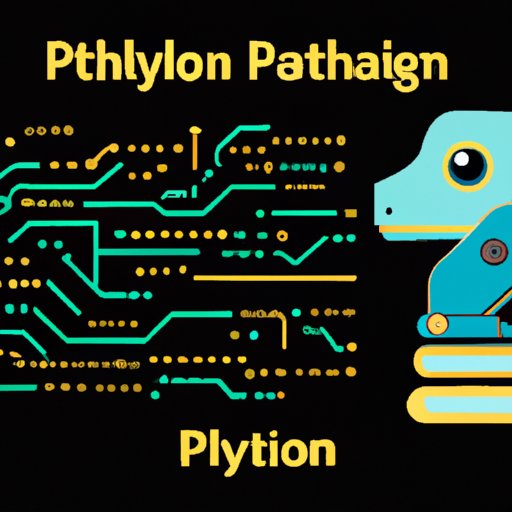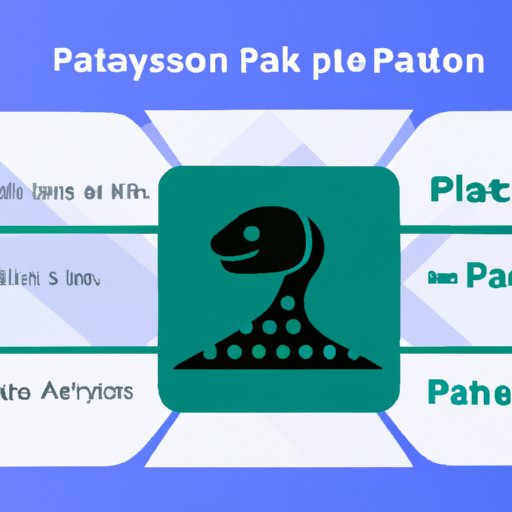Introduction
Artificial intelligence (AI) is a broad term that refers to the simulation of human intelligence processes by machines, such as computers. AI can be used to perform tasks such as recognizing patterns in data, making decisions based on data, and solving complex problems. Python is an open-source programming language that is increasingly being used for AI projects due to its flexibility and ease of use.

Exploring Machine Learning Algorithms and Techniques with Python
Machine learning is a type of AI that enables computers to learn and improve from experience without being explicitly programmed. It uses algorithms to analyze data and identify patterns, allowing machines to make predictions and decisions. Python is an ideal programming language for machine learning because it offers a wide range of libraries and packages that support various machine learning algorithms and techniques.
There are three main types of machine learning algorithms: supervised learning, unsupervised learning, and reinforcement learning. Supervised learning algorithms use labeled data to train a model, while unsupervised learning algorithms use unlabeled data to discover patterns in the data. Reinforcement learning algorithms use rewards to encourage the machine to learn. Python’s machine learning libraries provide support for all three types of algorithms, enabling developers to quickly create machine learning models.
The advantages of using Python for machine learning include its readability and flexibility. Python’s syntax is relatively simple and easy to understand, making it easier for developers to quickly build machine learning models. Additionally, Python’s extensive library of packages allows developers to easily incorporate additional features into their models. This makes Python an ideal choice for both experienced and novice machine learning developers.
Building AI Applications with Python Libraries
Python also offers a wide range of libraries that can be used to develop AI applications. Popular Python libraries for AI include TensorFlow, Keras, Scikit-Learn, and PyTorch. These libraries enable developers to quickly build powerful AI applications with minimal effort.
TensorFlow is an open-source library developed by Google for machine learning and deep learning. It provides a wide range of tools and features for building AI applications, such as neural networks and computer vision. Keras is another popular library for deep learning, providing an API for building and training neural networks. Scikit-Learn is a library specifically designed for machine learning, offering a number of pre-built algorithms and tools for data analysis. PyTorch is an open-source library for deep learning, providing an API for building and training neural networks.
The benefits of using Python libraries for AI include improved productivity, scalability, and performance. Python libraries provide developers with a wide range of tools and features for quickly building AI applications. Additionally, Python libraries are highly scalable, allowing developers to easily add more features or increase the complexity of their applications. Finally, Python libraries are optimized for performance, ensuring that applications run quickly and efficiently.
Using Python to Create Neural Networks for AI
Neural networks are a type of AI technology used to process large amounts of data and make predictions. They consist of interconnected nodes that process data and generate output. Python can be used to create neural networks, allowing developers to quickly build powerful AI models.
Creating a neural network with Python requires knowledge of the Python programming language as well as the Keras library. Keras provides an API for building and training neural networks, making it easy for developers to quickly create powerful AI models. Additionally, Keras offers several pre-built layers that can be used to create complex neural networks.
The benefits of using Python for neural network creation include improved productivity, scalability, and performance. Python’s syntax is relatively simple and easy to understand, making it easier for developers to quickly build neural networks. Additionally, Python’s extensive library of packages allows developers to easily incorporate additional features into their models. Finally, Python’s optimized code ensures that neural networks run quickly and efficiently.

Utilizing Python Scripts for Automating AI Tasks
Python scripts are small programs written in Python that can be used to automate various tasks. They are commonly used in AI projects to automate repetitive tasks, such as data cleaning and data analysis. Python scripts can be written to perform single tasks or multiple tasks, depending on the complexity of the project.
Writing Python scripts for automation requires knowledge of the Python programming language as well as the relevant libraries. Python libraries such as Pandas and NumPy can be used to clean and analyze data, while libraries such as Scikit-Learn can be used to create machine learning models. Additionally, libraries such as TensorFlow and Keras can be used to create neural networks.
The benefits of automating AI tasks with Python include improved productivity, scalability, and accuracy. Python scripts can be written to automate many different tasks, allowing developers to quickly complete complex projects. Additionally, Python scripts are highly scalable, making it easy to add more features or increase the complexity of the script. Finally, Python scripts are accurate, ensuring that tasks are performed correctly every time.

Combining Python and AI Technologies for Data Science Projects
Data science is a field of study that combines mathematics, statistics, and computer science to analyze large amounts of data and uncover patterns. Python is an ideal language for data science projects due to its extensive library of packages and its ability to integrate with other AI technologies.
Python offers a wide range of libraries and packages that can be used for data science projects. Popular Python libraries for data science include Pandas, NumPy, Matplotlib, and Scikit-Learn. These libraries provide powerful tools for data analysis and visualization, allowing developers to quickly uncover patterns in data. Additionally, Python can be used to integrate with other AI technologies, such as machine learning and neural networks, providing developers with powerful tools for creating data science projects.
The benefits of combining Python and AI technologies for data science projects include improved productivity, scalability, and accuracy. Python’s extensive library of packages provides developers with powerful tools for quickly analyzing and visualizing data. Additionally, Python’s ability to integrate with other AI technologies enables developers to create complex data science projects. Finally, Python’s optimized code ensures that data science projects are accurate and reliable.
Conclusion
Python is an increasingly popular programming language for AI projects due to its flexibility and ease of use. It can be used to explore machine learning algorithms and techniques, build AI applications, create neural networks, automate AI tasks, and combine Python and AI technologies for data science projects. The advantages of using Python for AI projects include improved productivity, scalability, and performance.
In conclusion, Python is an ideal language for AI projects due to its flexibility and extensive library of packages. Its syntax is relatively simple and easy to understand, making it easier for developers to quickly build powerful AI applications. Additionally, Python’s ability to integrate with other AI technologies enables developers to create complex data science projects. Finally, Python’s optimized code ensures that AI projects run quickly and efficiently.
(Note: Is this article not meeting your expectations? Do you have knowledge or insights to share? Unlock new opportunities and expand your reach by joining our authors team. Click Registration to join us and share your expertise with our readers.)
